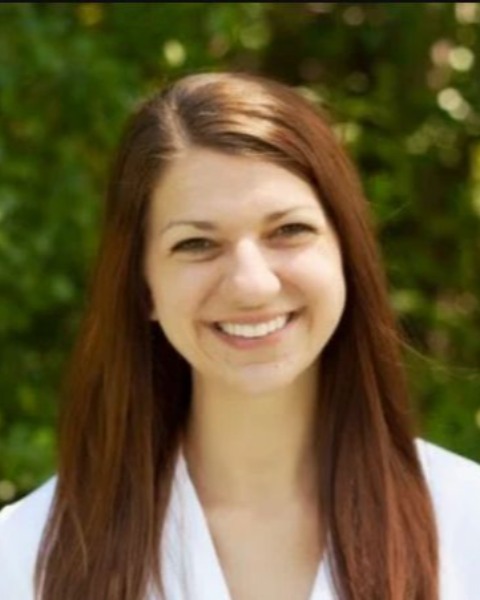Medical Education: Resident
Category: Abstract Submission
Medical Education 13 - Medical Education: Resident IV
262 - Procedural Competency and the Clinical Learning Environment of a Pediatric Residency Program
Monday, April 25, 2022
3:30 PM - 6:00 PM US MT
Poster Number: 262
Publication Number: 262.419
Publication Number: 262.419
Jenna R. Erickson, Phoenix Children's Hospital, Phoenix, AZ, United States; Romy B. Shane, Phoenix Children's Hospital, Phoenix, AZ, United States; Edward L. Swing, Phoenix Children's Hospital, Phoenix, AZ, United States; Jon McGreevy, Phoenix Children's Hospital, Phoenix, AZ, United States

Jenna Erickson, MD, MS (she/her/hers)
Fellow, Pediatric Emergency Medicine
Phoenix Children's Hospital
Phoenix, Arizona, United States
Presenting Author(s)
Background: Procedural competency is an important component of residency training across multiple specialties. In the field of pediatrics, the ACGME specifies 13 necessary procedures for successful completion of residency requirements. However, there are no clear guidelines on what constitutes competency, and if requirements align with available procedural exposures for trainees. Thus, a detailed description of resident procedural exposures would greatly contribute to the understanding of what constitutes up-to-date, relevant, and necessary procedures for newly trained pediatricians.
Objective: To define the procedural clinical learning environment for a large pediatric residency training program based on resident procedure logs.
Design/Methods: Retrospective data was collected from the procedure logs of three consecutive categorical pediatric residency classes from Phoenix Children’s Hospital (n=90). The average number of procedures performed per resident was calculated in total and for each ACGME-required procedural category. Procedures were also quantified for core rotations and elective rotations. The impact of resident career choice on procedures was investigated using the reported first position post-residency. Careers were grouped into outpatient (n=34), hospitalist (with or without fellowship, n=21), and procedure-heavy fellowships (n=15). ANOVA was utilized to calculate statistical significance.
Results: The average number of procedures per resident was 41 (SD 27). Lumbar puncture was the most commonly reported procedure (7 per resident) and also the only category in which all residents reported at least one procedure. Significant differences in core rotations were identified, with an average of 44% of procedures performed in the emergency department, 20% in the NICU, 11% in clinic, and 5% in PICU (f=166, p< 0.001). Electives varied significantly, with anesthesia as the highest to offer procedures at 18% (f=7, p< 0.001). There was no significant difference in procedures based on career choice (f=2.5, p=0.09).Conclusion(s): There was a respectable number of procedures per resident at 41, but wide variation (max 152, min 11) which is likely due to inaccuracies of self-reporting. As predicted, the emergency department provides the best opportunity for resident procedures, despite the presence of fellows. Additionally, with the high percentage of procedures on anesthesia elective it may be beneficial to incorporate this exposure into all resident training. Finally, career pathway proved to be less of an influence than predicted, though this may indicate a well-balanced procedural clinical learning environment.
Objective: To define the procedural clinical learning environment for a large pediatric residency training program based on resident procedure logs.
Design/Methods: Retrospective data was collected from the procedure logs of three consecutive categorical pediatric residency classes from Phoenix Children’s Hospital (n=90). The average number of procedures performed per resident was calculated in total and for each ACGME-required procedural category. Procedures were also quantified for core rotations and elective rotations. The impact of resident career choice on procedures was investigated using the reported first position post-residency. Careers were grouped into outpatient (n=34), hospitalist (with or without fellowship, n=21), and procedure-heavy fellowships (n=15). ANOVA was utilized to calculate statistical significance.
Results: The average number of procedures per resident was 41 (SD 27). Lumbar puncture was the most commonly reported procedure (7 per resident) and also the only category in which all residents reported at least one procedure. Significant differences in core rotations were identified, with an average of 44% of procedures performed in the emergency department, 20% in the NICU, 11% in clinic, and 5% in PICU (f=166, p< 0.001). Electives varied significantly, with anesthesia as the highest to offer procedures at 18% (f=7, p< 0.001). There was no significant difference in procedures based on career choice (f=2.5, p=0.09).Conclusion(s): There was a respectable number of procedures per resident at 41, but wide variation (max 152, min 11) which is likely due to inaccuracies of self-reporting. As predicted, the emergency department provides the best opportunity for resident procedures, despite the presence of fellows. Additionally, with the high percentage of procedures on anesthesia elective it may be beneficial to incorporate this exposure into all resident training. Finally, career pathway proved to be less of an influence than predicted, though this may indicate a well-balanced procedural clinical learning environment.
